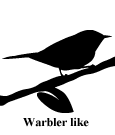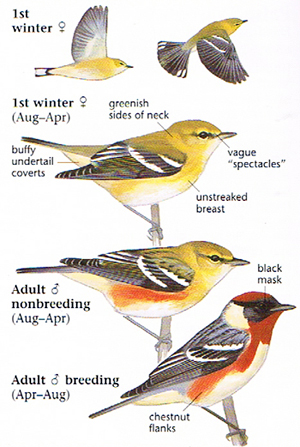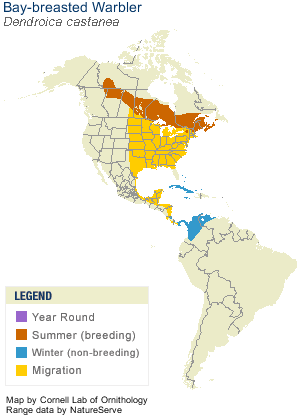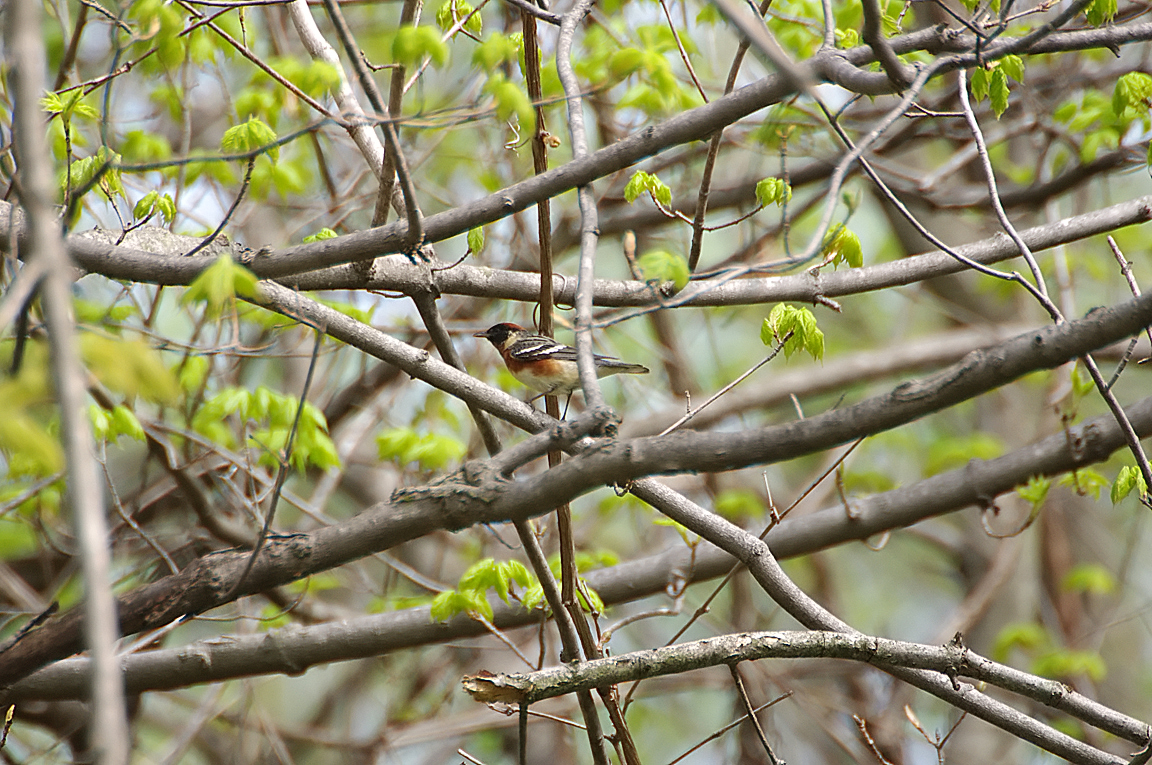|
|
|
 |
Bay-breasted Warbler
|
| Dendroica castanea | |
A large warbler of the northern spruce forests, the Bay-breasted Warbler benefits from spruce budworm outbreaks when the caterpillars provide abundant food. Spraying to control the destructive outbreaks may have reduced populations of this warbler.
Interesting Information
-
The Bay-breasted Warbler is closely related to the Blackpoll Warbler, and hybrids between the two species are known. The Bay-breasted Warbler is known to hybridize also with Yellow-rumped and Blackburnian warblers.
-
Adult Bay-breasted Warblers appear to follow a more western migratory route south in the fall than first-year birds. More adults migrate west of the Appalachian Mountains than east of them, while first-year birds are frequent along the coast.
-
In contrast to the more stable populations of other warblers, Bay-breasted Warbler numbers go up and down depending on outbreaks of the spruce budworm. It is abundant during infestations, but declines or even disappears from some areas a few years later.
Description
Adult Description
-
Small songbird; large warbler.
-
Breeding male with black face and chestnut head.
-
Two broad white wingbars.
-
Rufous on flanks.
-
Length Range: 14 cm (5.5 in)
-
Weight: 14 g (0.5 oz)
-
Size: Small (5 - 9 in)
Sex Differences
Male Description
Breeding (Alternate) plumage: Crown, throat, and sides deep chestnut brown. Cream colored patch on back of neck. Belly whitish. Back gray with black stripes. Two broad white wingbars on each wing. Undertail coverts buffy. Eye dark. Legs black.
Nonbreeding (Basic) plumage: Crown, nape, and upperparts yellowish olive green, streaked with black. Rump grayish. Flanks striped with chestnut. Indistinct yellow eyestripe. Wings and tail blackish. Two broad white wingbars on each wing. Pale patch on back of neck. Buffy undertail coverts.
Female Description
Breeding (Alternate) plumage: Sides washed with variable amounts of chestnut. Face gray. Creamy patch on back of neck. Throat buffy, tinged with chestnut. Back olive-gray with indistinct black stripes. Rump olive-gray and unstreaked. Wings with two broad white wingbars. White spots near tip of outer two tail feathers.
Nonbreeding (Basic) plumage: Crown, nape, and upperparts yellowish olive green, streaked with black. Rump grayish. Flanks striped with light chestnut or buff. Indistinct yellow eyestripe. Wings and tail blackish. Two broad white wingbars on each wing. Pale patch on back of neck. Buffy undertail coverts.
Immature
Similar to fall adult, but with less chestnut, more olive, and finer streaking on back. Still shows two broad wingbars and hint of pale neck patch.

Photo taken from: The Sibley Field Guide by David Allen Sibley

© 2003 Cornell Lab of Ornithology
|
Habitat |
|
Breeds in boreal spruce and fir forest. Winters in lowland tropical forest and second growth. |
|
Behavior |
|
Hovers at flowers and sap wells (made by sapsuckers), catches insects in flight and plucks them from leaves, plucks spiders and trapped insects from spider webs. |
|
Food |
|
Breeds in boreal spruce and fir forest. Winters in lowland tropical forest and second growth. |
Taxonomy
| Kingdom: | Animalia |
| Phylum: | Chordata |
| Subphylum: | Vertebrata |
| Class: | Aves |
| Order: | Passeriformes |
| Family: | Parulidae |
| Subfamily: | Picinae |
| Genus: | Dendroica |
| Species: | Dendroica castanea |
Similar Species |
|
|
Bird Sound |
|
Song very high-pitched "seetzy, seetzy, seetzy." |
|
Eggs look like this |
|
Photo taken from: ARCTOS Collaborative Collection Management Solution |






